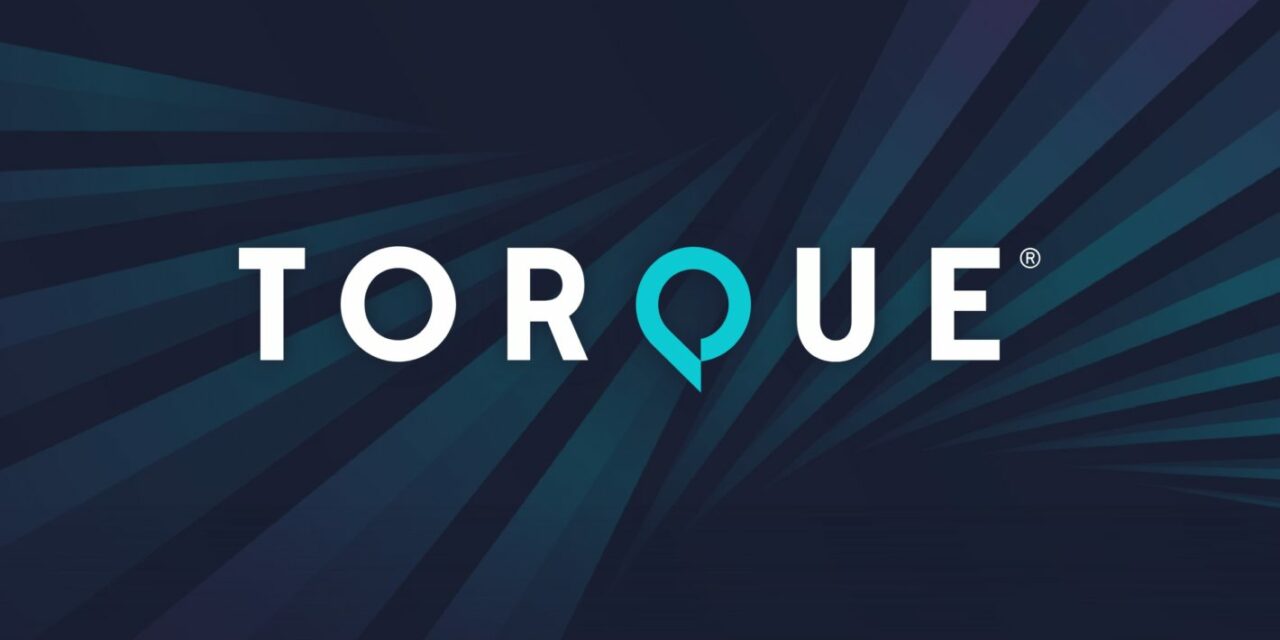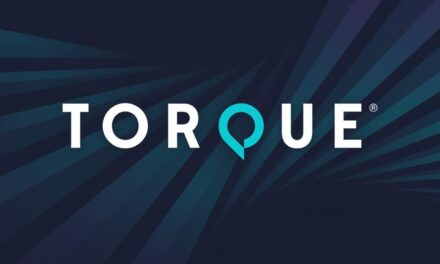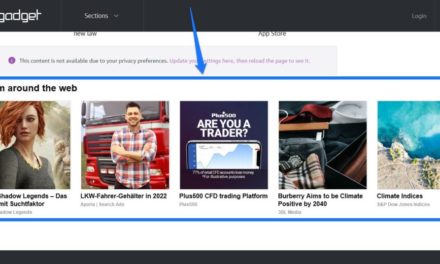Welcome to Press This, the WordPress community podcast from WMR. Each episode features guests from around the community and discussions of the largest issues facing WordPress developers. The following is a transcription of the original recording.
Powered by RedCircle
Doc Pop: You’re listening to Press This, a WordPress community podcast on WMR. Each week, we spotlight members of the WordPress community. I’m your host, Doc Pop, I support the WordPress community through my role at WP Engine and my contributions over on TorqueMag.io. You can subscribe to Press This on Red Circle, iTunes, Spotify, or you can download episodes directly at wmr.fm.
Black Friday and Cyber Monday are coming up and I’m wondering if you’re ready. In this episode, we’re sitting down with Josh Dailey, a product marketing manager from WP Engine to talk about last minute tips and tricks to make sure your eCommerce site is ready for the biggest sales weekend of the year. Josh, how are you doing today?
Josh Dailey: I’m doing fantastic. Always a joy to talk to you Doc.
DP: Absolutely. And it was great seeing you at WordCamp US, and we’re going to talk about eCommerce and about Cyber Weekend. Is that what it’s called?
JD: Yeah, Black Friday, Cyber Weekend right after that. Yes.
DP: Right. So before we get into that, I want to hear a little bit, I know you’ve been in the WordPress game for a minute, why don’t you tell us a little bit about how you got into WordPress?
JD: I actually got started back in 2012-ish I want to say. I was content creating, doing a lot of video content at that time. And the customers that I had were asking for ways to distribute that content. So we started looking at website options. And I’m kind of one of those guys that will start tinkering at anything and say, “oh, you want to do that? I guess I’ll figure out a way to get that done.”
And so I just pressed in on WordPress and figured out a way to get it onto my own server with .org and then the rest is kind of history from there.
But, I will note that one of my first hosting providers was WP Engine and so to be on their team now after this timeframe, it’s been awesome, because I was an early adopter with them because of the farm hacks and that kind of stuff happening at that time, and they’ve provided a solution where I could go in and be creative still without having to worry about my site’s backend and hacks and that kind of stuff. So that’s how I got started.
DP: And now that you’re at WP Engine. Are you working on anything kind of eCommerce-related for WP Engine users?
JD: Yeah, definitely. So, my whole role and function is in the eCommerce space. After I got into the website building side then I started getting requests for eCommerce sites and I started working with WooCommerce. So it’s kind of a natural progression to then be the product marketing manager of the eCommerce solution here at WP Engine.
DP: Well, let’s get into it. You know, I like eCommerce, I like to shop online. And you know, we are coming up, as of recording, I think when this goes up we’ll be close to Cyber Weekend. And sales are already kind of starting to pop up, or at least hints of sales. Is it too late for site owners to worry at this point? Should they just lock in or should they continue worrying about having their site ready for Cyber Weekend?
JD: I mean, as a rule of thumb, people say, if you’re planning your sale for a major event like that, you should actually start thinking about it the year ahead. So you really want to be pressing into it, especially if you’re talking about what servers should I be on? Do I have everything configured properly?
At this point, you should really be thinking about the marketing plan. But there are some little things that you can still be doing around the testing side of things that you should be thinking about, to make sure all of the things you’re about to send out, you know; email blasts or social campaigns. You want to make sure the site is performing at its best. And you want to make sure that the Add to Cart button is working or that the checkout flow is working and that they’re going to have a good experience during the complete buyer journey.
DP: I think we’re going to talk about how to test and we’re gonna talk about load testing in a minute. But before we do, you kind of brought up some things beyond even website optimization. You’re mentioning things like; is your payment solution ready. I’m just kind of curious, is there any testing people should be doing now to make sure Visa and PayPal are going to be working during that weekend?
JD: Yeah, I mean, essentially, even if you talk to agencies, most of them are using manual testing processes. Just getting in and acting as a customer can be a huge win for you. You’ll uncover a lot of stuff. If you don’t always act as the owner of the site or the developer of the site, it’s sometimes a good practice for you to just go in and act like, “hey, I’m a new user, first-time user.” Go through the buyer experience, and you can uncover all kinds of things that way.
DP: What you’re talking about, I believe, is WooCommerce, which is probably what most WordPress websites are using for their eCommerce sites. WooCommerce would have some sort of test option? Or are you talking about actually signing up as a customer and running a real credit card?
JD: I mean, you can do both. There are sandbox ways to do stuff, but as you know, even in using local development and that kind of stuff, when you push live, the game’s different. And so it’s a good idea to run a transaction with your own credit card and then you can refund yourself if you need to do that.
But I would say do both. Do the sandbox testing but at this point, like we were talking about, if your site is live, there’s very little you should be changing, because you don’t want to break something in the process when you’re this close to a big event. So at this point you should be really focused on, is the UX working the way that it should? Is everything working as it should? Rather than making big changes to the infrastructure.
DP: Absolutely. So I should not be AB testing for site optimization right now. My fundamentals work. And let’s talk about the testing that we do want to do, which is stress testing, right?
JD: Yes, you can do stress testing. But if we’re talking about the big event itself, I would be more in touch with your hosting provider, your server, your developers, whoever that is, and making sure they’ve done what they’re supposed to do to make these things work.
The stuff that you can be testing, you know, as a marketer, if you’re A/B testing something that really should just be your CTAs, your campaigns, and that kind of stuff. On a stress testing side, you want to make sure at the base level, you’re able to go back to your hosting provider and be like, “Hey, is my site ready to handle this influx of traffic that I’m about to have?”
DP: Now is this load testing something that your provider would have, like a button you can click on the dashboard. Or is this an extra tool that you would use?
JD: It really depends on the developer that you’re working with. If you’re a developer, you probably have your own sets of tools. And then there’s variations of open source tools that you can use to do this. Or, a lot of times, people will write their own testing. And then there’s obviously premium tools that you can use, but it’s not built into your hosting provider.
The other thing you’re going to want to do is if you’re getting a bunch of bots to ping your site, you’re going to need to let your host know, so that they don’t block the test from happening, or freeze it up. So you’re going to want to let your hosting provider know, “Hey, I’m about to do this load testing and you’re gonna see a lot more traffic than normal.” To make sure that they’re not going to block you because they think it’s an attack on you or something.
DP: Absolutely. Let’s take a break here, and when we come back, we’re going to talk just a little bit more about load testing and what to do with what you learn from your load testing. So stay tuned.
DP: You’re listening to Press This, a WordPress community podcast on WMR. I’m your host Doc Pop. We’re talking about eCommerce and getting ready for Cyber Weekend and making sure your site is ready to handle the massive traffic that you’re going to be receiving. I’m talking to Josh Dailey here, and Josh, before the break, we were talking about load testing. Did you have more you wanted to say about load testing itself?
JD: Yeah, I just think that on an overarching scale, load testing is something that’s really important, especially if you’re using WooCommerce, which the primary audience to this podcast would be using. Because of the way that WordPress and WooCommerce handles transactions, things like cart fragments can cause a strain. aAnd then, because of the fact that a lot of times there’s people on budget hosting, or these different ways of handling this throughout the year, maybe you don’t have the same level of traffic,There’s different things that you need to think about when you’re about to have an event.
You’re going to have spikes in traffic. And you’ve got to think that’s going to have a different impact on your site. So you’re thinking about bandwidth and you’re thinking about how WooCommerce handles that.
Another big thing to think about when you’re thinking of load testing, is that you can’t just do the standard, maybe homepage. You want to be checking different pages on your site. And you want to check with items in the cart and with items outside of the cart. So there’s multiple variations of the way that the site functions. And it will depend on those things, whether caching is enabled or different things like that, that will help with performance at different points. And so those can all have an impact on whether the site can handle the level of traffic or not. So you have to have different variations of testing that you’re doing to really get a read on whether it can handle the traffic.
DP: You mentioned cart fragmentation and I’m going to raise my hand and say I don’t know what that is. I’m going to pretend that I don’t know. [Laughter] No I do not.
JD: Yeah, yeah.
DP: Maybe walk me through that.
JD: Yes. So cart fragments are what WooCommerce uses to keep the cart notifications and the tally of what’s in the cart up to date, in real time, without refreshing the page every time you use the Add to Cart function. Now, this is a great thing because you’re a dynamic website and people want to know in real time—I mean, it contributes to cart abandonment when this information isn’t staying up to date. But essentially, that Ajax script that’s used is used on every page across the site. And it’s used even on pages where the cart is not enabled. And it keeps checking in and is pinging that, anytime WooCommerce is installed. And so, cart fragments has a positive, from the side of dynamic usability, but it also has a negative on performance, especially for people interacting with the cart.
And so there’s some methods that people suggest like, just disable cart fragments, but that creates a trade off, right? Now the ping is not happening, but I’m unable to use the dynamic cart functionality that tells me how many items are in the cart. There’s other things like, WP Engine recently released a product called Live Cart that allows you to continue using that dynamic cart functionality by optimizing the way that cash is used across the store. And it actually allows for more concurrent shoppers to be on the site at the same time, utilizing the cart without dropping connections. So more stability, better performance of the cart, faster load times without losing connections are really important things.
So you really want to know,, if you’re going to have you know 25, 30, 40 shoppers shopping at the same time because you sent out an email blast, this is when WooCommerce, on a budget host, you’ll start feeling the pressure from that and you’ll start losing connections because of that.
DP: You’re actually mentioning something kind of different than I expected. We’re talking about disabling cart fragmentations or not, caching enhancements, but I feel like you’re talking about them as if these are things that you’re going to kind of want to do differently during Cyber Weekend than you would the rest of the year. Am I imagining that, or are we talking about, these things that should always be going on for maximum performance.
JD: So you’d want to do it year round for maximizing performance, because you never know when there’s going to be an influx of traffic. But the time that you’re going to feel it with things like, let’s say the way that cache is enabled. WooCommerce has cache recommendations, for example, and they make these recommendations, and if somebody comes to your site and they’re visiting your site for the first time, cache is cache and it’s just going to work. But after the cart is used is when cache stops being applied because they do a cache exclusion that tells the site to stop.
Now there’s reasons for that. And some of those reasons are because a form in the dynamic functionality of the cart needs to continue to work. And if you don’t cache correctly or have cache configured correctly, those things will stop functioning, right? Well, with something like EverCache, it will cache 90% more of your pages without breaking the dynamic functionality of the site. The benefit of that is anybody using the cart on your site is going to be able to continue navigating the site, have better performance throughout the complete buyer journey. And they’re only going to feel that change though, if items have been added to the cart or removed from the cart.
So most of the time, like, if you run a Google PageSpeed test, for example, and you’re like, “well this is how I’m going to test whether my site is performing well or not.” Google PageSpeed Insights, Pingdom, these other page speed tests only check one page at a time, it’s not checking the entire site. So if they say, “well I’ve load tested my site by running a page speed test from Google,” what they’re actually doing is only checking the performance of that page, and they’re not checking it after items have been added or removed from the cart.
And WooCommerce feels the most pressure, the most weight after the carts have been utilized. So if you’re running a big event, then it starts making more sense that those things become more useful at that moment, but they’re things that you should be running all the time. Better caching is something you want to run on your site, no matter if it’s a big event or not. But during the big event is when you’re going to feel the benefits the most.
DP: You mentioned better caching. I just want to clarify, you’re not talking about a plugin called Better Caching.
JD: No, just better caching in general, like, we’re always working to optimize how cache works, especially for a store. Because, again, similar to the cart fragments functionality, a lot of times what people will do when they’re on a dynamic site, whether that’s WooCommerce or an LMS or whatever, where you’re creating these personalized experiences. If you have cache configured wrong, what ends up happening is some of the data gets saved, and can be shown.Let’s say you’re filling out a form, and you put in your name and credit card information and that stuff, and the cache is configured properly. It will save that and it will show it the next time somebody tries to enter information in the form. So now you’re exposing your data publicly to the next shopper visiting that form, another customer’s data.
That’s not a good thing. And so how you have your cache configured is a real science.iIt’s an art form to make sure that you’re able to continue serving pages two times faster—because that’s the benefit of cache—but not caching pages that are going to end up exposing data or breaking some kind of site functionality because it needed the dynamic ability and it couldn’t just serve the content as static.
So that’s really where things like cache are a performance benefit all the time. You gotta be looking at the various types of caching and making sure that those are configured properly. And it’s especially important for eCommerce sites.
DP: Absolutely. Yeah, I’m struggling to think of a “Cache Rules Everything Around Me” joke here. [Laughter] Do you have a “Web Caching Rules Everything Around Me” like on a neon sign in the background of your office? I can totally see that.
JD: Oh, I should do that though. I don’t right now. But I could get an old school Gobo and just shine it up on the wall next time we talk.
DP: Let me just remind you it’s a podcast, so.
JD: I’ll just lie to you and say it is, it’s shining behind me right now.
DP: Boy is it. [Laughter] We’re gonna take another quick break here. And when we come back, we’re going to talk with Josh Dailey on our final tips for improving eCommerce in preparation for Cyber Weekend, and how to leverage PageSpeed Insights to improve your core web vitals, so stay tuned.
DP: You’re listening to Press This, a WordPress community podcast on WMR. I’m your host, Doc Pop, talking with Josh Dailey about how to make sure your site is ready for the busiest sales weekend of the year. Cyber Wednesday is— Cyber Wednesday, that would be a great one [Laughter]. Cyber Weekend is coming up. Well. We’ve got Cyber Monday.
JD: Giving Tuesday.
DP: That’s right, Giving Tuesday.
JD: We’ll add Cyber Wednesday, right after Giving Tuesday.
DP: So we’ve talked a lot. We’re talking mostly about optimization and kind of surprisingly, I feel like in previous years, or at least in any other website conversation, you wouldn’t mention optimization without mentioning JPEGs or WebP or image optimization. Is that a thing that eCommerce site owners don’t need to worry about, making sure their images are optimized, or is that something that you’re assuming they probably have that figured out?
JD: Yeah, you know, I would say that is where a store should be focusing their efforts this close to the holiday— kind of the things that we overlook, maybe for the rest of the year, that are just those kind of standard maintenance and best practices, things that we can be looking at. Maybe it’s time to start looking at the Best Of posts that you have and updating that content. Making sure your SEO is really on point. Making sure your evergreen content is actually evergreen.
And then, when you talked about images and that kind of stuff, checking your product pages. Here’s an interesting stat for you about images and video content, 25% of returns on an eCommerce store are because the product didn’t look like what the description was or what the image looked like when they got it in real life. So if you want to lower those return rates and then also improve on your cart abandonment, you need to be really thinking about how do I highlight my products with good product images, with good video content, to really show off these products. So that when they get them I’m not going to also be inundated with a bunch of returns because it didn’t look anything like what the product had promised.
DP: While still keeping in mind loading and making sure you’re not going too heavy on images.
JD: Exactly, yeah. Oh, for sure. Because like you had mentioned, different format types. I mean, if you’re using animated GIFs still as the way that you’re demonstrating your products, that’s a big problem, right? You want to move to more modern compression methods, like WebM, for your video and you know mp4 is a backup. And you can look at WebP for your images. But then, have good backups in place as well, so that for browsers that don’t support those more modern types or for people who are lagging behind the curve maybe on adoption.
DP: Yeah, I love GIFs to death. I’ve been a GIF artist for a very long time. And yes, absolutely do not belong on my site anymore. I need to switch over. You know, I love them. But yeah, their time has come. You know, you mentioned before the break PageSpeed Insights. Can you talk to us about what that is and what people need to do with PageSpeed Insights?
JD: Yeah, for sure. The biggest thing that I would say, using a tool like Google PageSpeed Insights, it’s open to everybody to use. You’re able to run these performance tests, and they have ratings that give your site, with opportunities for improvement. And now keep in mind that when you’re using a tool like that, really those numbers that they give, whether it’s an 80 or 100, or a 95, or whatever. Those are not percentages. Whatever number they’re giving you is not a percentage. It’s more of a metric for you to look at how do you compare to other sites that have similar things going on?
So what you need to do if you’re using a tool like that, is just make sure that you’re using it as a metric for you to continue to improve, continuing to monitor the performance of your site. And then keeping in mind, like I said earlier, that when you run those tests, you’re only testing the page that you’re on. So don’t think if you test your homepage, that you’re also checking your product pages, or if you’re checking your product page you’re not also checking your store page with all the products on it.
And you’re going to want to pick several different pages that you’re using to check. Your number one selling product or if you only have a few products on your site, I would check all of those and test every one of those pages to continue to use it as a means of getting better at your optimization. And treat it like another way that you’re improving SEO on your site. A similar method to that, you’re going in and you’re always checking this stuff and you’re working on improving that all the time. You want to do the same thing with your performance. Keep checking it. It’s not a set it and forget it kind of thing. You want to keep testing.
But make sure that you’re testing from the same place all the time. Noting that if you’re doing the test internally with the plugin, a lot of times it’s pinging from the same location and you don’t have control over where it’s pinging from—what tower or what server area it’s pinging from., and so that’s going to have an impact on the results that come back to you. Location. How close to the data center are you? So those are some things that I think about when using PageSpeed Insights.
DP: Josh, I really appreciate your time today. And I hope that everybody who’s listening who is getting ready for Cyber Weekend is going to have a smooth and pleasant Cyber Weekend. Maybe the best eHoliday of the year for you. If you’d like to learn more about what Josh Dailey is up to you can visit him on Twitter @joshdailey. And that’s it for this episode of Press This.
Thanks for listening to Press This WordPress community podcast on WMR. You can follow my adventures on Twitter @thetorquemag or you can go to torquemag.io where we contribute tutorials and videos and interviews like this every day. So check out torquemag.io or follow us on Twitter. You can subscribe to Press This on Red Circle, iTunes, Spotify, or you can download it directly at wmr.fm. I’m your host Doctor Popular, I support the WordPress community through my role at WP Engine, and I love to spotlight members of the community each week on Press This. Thanks for listening.











